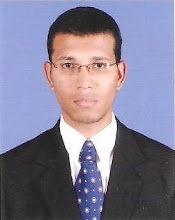He was but a young man in his early twenties, yet Sri Ramana Maharshi had already the serene countenance and radiant eyes of a Sage. He lived in a cave on the sacred mountain, Arunachala, beside the town of Tiruvannamalai in Madras State. He sought solitude and maintained silence to discourage visitors. Nevertheless, disciples gathered round. He was already known as ‘Maharshi’, the ‘Great Sage’; devotees addressed him in the third person as ‘Bhagavan’ (Lord). | ||||||||||||||||
It was less than half an hour’s walk from Skandasramam and the Maharshi would go there daily. Then, one day, he stayed. It was here that Ramanasramam sprang up. Sri Ramana Maharshi was already over forty at the time and had spent twenty-six years at Tiruvannamalai as a Self-realized sage; and yet he was not widely known outside of South India. He had avoided publicity and had done nothing spectacular to attract people, such as cures or miracles. There was no Ashram office, no correspondence, no facility for visitors, no publicity. | ||||||||||||||||
| ||||||||||||||||
| ||||||||||||||||
Concerned that he should be accessible to all comers at all hours, Sri Bhagavan never left the Ashram except for his daily walk on the mountain and palakothu, morning and evening, and in the early years, an occasional walk on the nine-mile road around the mountain. This is said to be particularly meritorious and should ideally be done barefoot, as a pilgrimage. The Maharshi always encouraged it. People would sit in meditation while the Maharshi watched over them, guiding them wordlessly. However there was no rigidity about it, no rule that every one must meditate at a given time or in a certain manner. Accommodation was sometimes difficult to find. It was never a residential Ashram in the usual sense; nevertheless, a large dormitory was put up where men could spread their bedding on the floor. There were also a few private rooms for guests. However, all this proved insufficient, and was of no help to women, who were not allowed to stay overnight in the Ashram premises. A number of devotees built their own houses round about, and thus a housing estate grew up. Sadhus made a colony near the Ashram and lived in caves and huts. A Maharaja donated a guesthouse. In spite of all this, difficulties in finding accommodation persisted. | ||||||||||||||||
| ||||||||||||||||
There were other confirmations of Sri Bhagavan’s continued Presence. When some devotees complained before his death that he was leaving them he answered cryptically: “You attach too much importance to the body.” The implication was obvious. The body was leaving them; he was not. He would remain the Guru as before. There is no spiritual head of the Ashram, no lineage successor to Bhagavan in human form. The Presence of the Maharshi is so intensely powerful and all-pervasive that it is clear to all his devotees that the Mighty Impersonality that Ramana was is the eternal Guru and presiding deity here. The spiritual instructions that he has left behind are complete in every way and spiritual support comes directly from him; all that is needed is practice. The sarvadhikari died in January, 1953 and his son, T. N. Venkataraman, took over the management of the Ashram as President. In 1994, T. N. Venkataraman retired and, as enjoined by Bhagavan’s will, entrusted his eldest son, V. S. Ramanan, to serve as the Ashram President. | ||||||||||||||||
Wednesday, October 21, 2009
SRI RAMANASRAMAM
Subscribe to:
Post Comments (Atom)

No comments:
Post a Comment